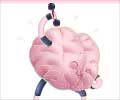Putting together several studies on benefits of exercise on the heart and circulation, experts have examined latest evidence and exploded some myths.
Putting together several studies on benefits of exercise on the heart and circulation, experts have examined latest evidence and exploded some myths. Also on almost every other system of the body.
Simon Marshall, a specialist in exercise and sports psychology at San Diego State University in California, furthered the fact that how getting fit helps prevent diseases such as stroke, cancer, diabetes, liver and kidney disease, osteoporosis and even brain conditions."We haven't done a great job of distilling down a large number of studies and say what this means for the average person who's trying to get in shape," News Scientist quoted Marshall as saying.
The magazine laid out its observations after screening nine articles.
1. What counts as exercise?
The standard advice is we should aim for 150 minutes a week of moderate-intensity exercise. The tricky question here is what "moderate" means.
Gauging the intensity of an activity by measuring how fast it makes your heart beat is old hat. These days, metabolic rate is the preferred measure. It is usually represented in units known as the metabolic equivalent, or MET. This is the metabolic rate during the activity in question divided by the rate when sitting doing nothing. Moderate exercise is defined as anything that clocks up between 3 and 6 METs.
Advertisement
Half-an-hour of moderate-intensity exercise at least five days a week used to be the required regime to keep fit. Now the consensus is that exercise doesn't have to be portioned out in daily doses. If you aim for 150 minutes per week you can divide it up however you like.
Advertisement
"Fitness" can refer to a number of attributes, including muscle strength and flexibility, but is usually used to refer to aerobic fitness, also known as cardiorespiratory or cardiovascular fitness.
4. Is pumping iron really necessary?
Several studies have suggested a link between muscle strength and living longer, but for a long time it was unclear whether other factors were confusing the picture. People who are muscular are more likely to be thin, aerobically fit and generally healthy - all features known to extend lifespan.
5. Can jogging kill you?
The risk of a heart attack does rise during vigorous exercise like jogging or shovelling snow. But the extent of the rise depends heavily on how accustomed you are to that exercise.
6. Is getting fit easier for some people?
While physical activity is an essential part of getting fit, it's not the whole story. An individual's fitness level also depends on how they respond to that activity, which is largely determined by their genes.
7. Can you be fat and fit?
No one denies that there is a negative correlation between weight and aerobic fitness: overweight people tend, as a group, to be less fit. This is partly because a sedentary lifestyle contributes to weight gain, and partly because fat people may feel discouraged from taking exercise. It can be a vicious circle.
8. Do you need to 'push fluids'?
Everyone knows the importance of keeping hydrated. Whether it's a water bottle or a sports drink, athletes and gym bunnies are rarely seen without a source of fluid close at hand. Common advice is to deliberately drink beyond what thirst dictates, or "push fluids", to combat dehydration and keep performance up to scratch.
9. What if you get injured?
Pulled muscles and twisted ankles are the downside of sports and exercise. Sometimes it's hard to know whether to rest an injury, see a doctor or even push on through the pain.
Source-ANI
TRI















